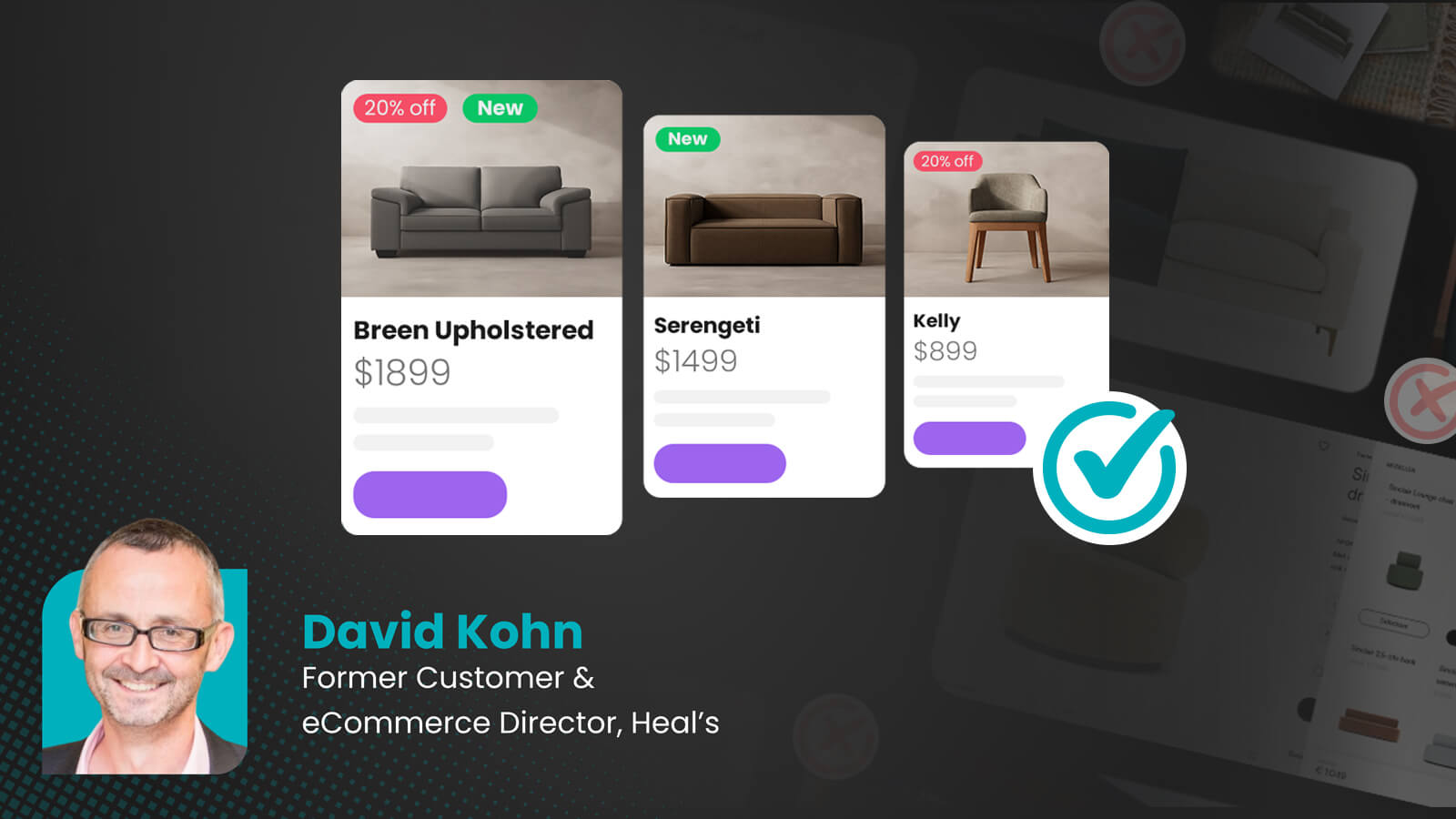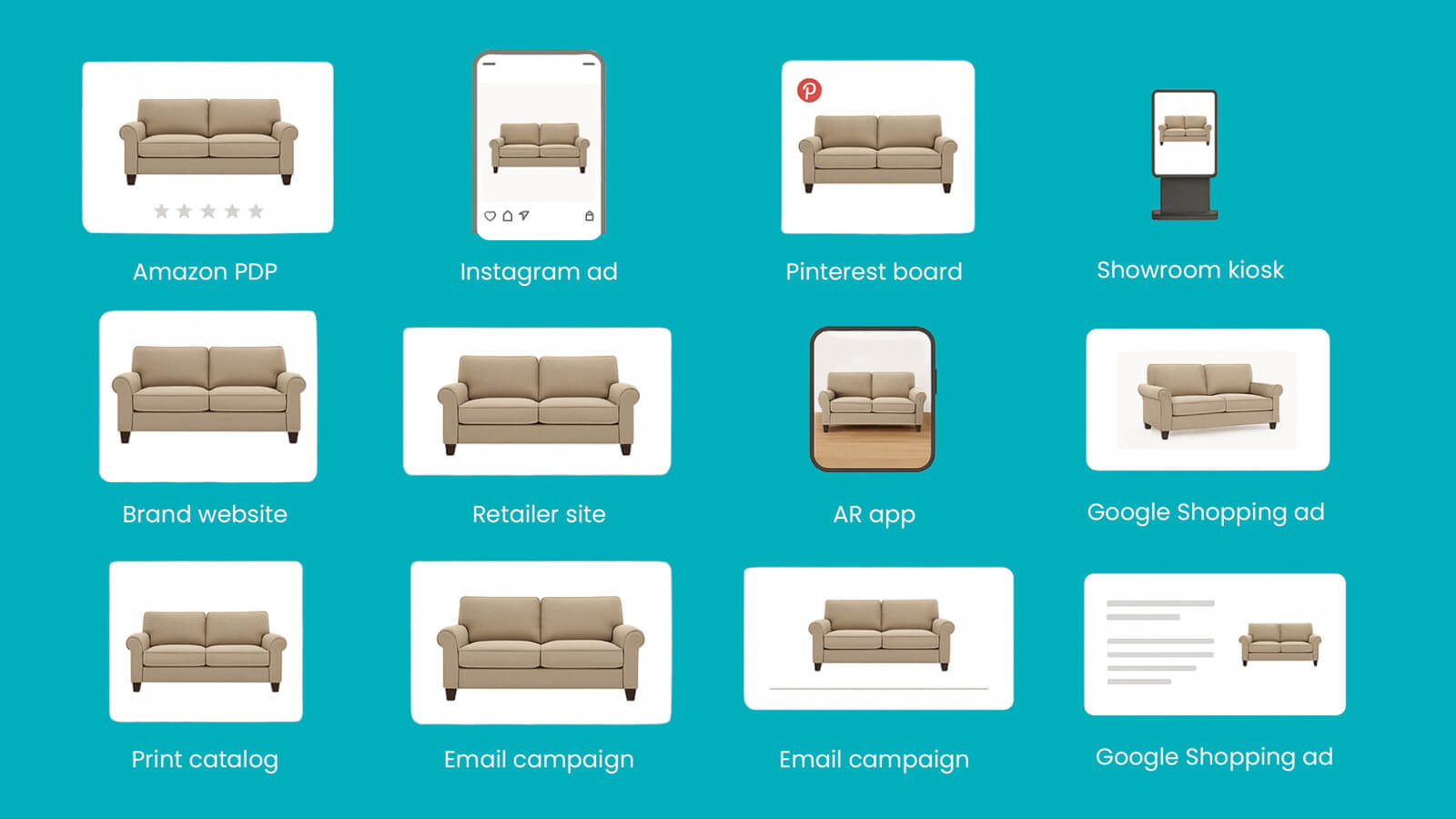Product pages are no longer just digital catalogs, they’re your most powerful conversion tools.
In this post, we break down expert advice from David Kohn, former Director of eCommerce at Heal’s, on how furniture brands can win more sales through experience-driven PDPs (product detail pages). You’ll learn how to reduce shopper hesitation, optimize for high-intent interaction, and create seamless product journeys that convert.
Why experience is now your best conversion tool
Great product pages help customers feel confident, not overwhelmed.
Nearly 90% of shoppers say experience matters as much as the product itself, especially in high-consideration categories like furniture. But experience isn’t just flashy design. In our Winning the eComm Race webinar, David Kohn explained that it comes down to helping the shopper answer three key questions fast:
1. Am I in the right place?
2. Can I do what I want, quickly and confidently?
3. If I get stuck, is help easily accessible?
Pro tip: Avoid unnecessary bells and whistles. If it doesn’t reduce friction, it’s probably getting in the way.
What’s really killing your conversions? (Hint: it’s not your competitors)
Indecision is your biggest competitor in furniture eCommerce.
Furniture shoppers aren’t just browsing, they’re battling doubt. Will it fit? Will the color match? Is it kid-proof or pet-friendly?
Kohn calls this the FOGGY effect: Fear of Getting It Wrong. It’s the invisible friction that quietly erodes purchase confidence.
How to fix it:
- Use visualization tools (like Cylindo) to show products in context
- Offer interactive 3D views and AR
- Provide reassurance with specs, reviews, and visual configuration
Example: Yardistry uses Cylindo to offer fast-loading, immersive product views that reduce doubt and increase cart value.
How to simplify choice without limiting customization
Empower customers with smart defaults, not endless options. Yes, personalization drives revenue (up to 300% AOV lift with more configuration options). But without guidance, too much choice becomes decision fatigue.
David Kohn’s advice:
- Use storytelling cues to guide choices (e.g., show velvet on a pet-friendly sofa)
- Offer curated bundles or bestsellers
- Make the most popular configurations visually prominent
Related read: How Cozey scaled personalized PDPs with Cylindo.
What a high-performing PDP actually needs
A great PDP creates desire, drives interaction, and builds trust.
Kohn breaks the product page down into three core jobs:
1. Create desire – Show aspirational lifestyle imagery
2. Drive interaction – Let users customize and explore with configurators, 360° views, and AR
3. Offer reassurance – Answer questions before they’re asked (returns, specs, shipping, etc.)
Tools to consider:
- Cylindo Studio for 3D configuration
- Glassbox for engagement heatmaps
- Low-tech user testing to identify sticking points
Quick test: Sit with someone unfamiliar with your site and ask them to buy a sofa. Watch. Learn. Iterate.
Does long dwell time = success? Not always.
Time on page doesn’t equal buying intent. In fact, it might signal confusion.
Long sessions without conversion can mean your PDP is unclear or overwhelming. That’s why testing is critical.
Test ideas from Kohn:
- Lifestyle image vs. 360° selector
- Seasonal backdrop vs. default studio image
- Reorder PDP layout for returning vs. first-time visitors
Insight: Great PDPs adapt to buyer stage, not just device or channel.
Final takeaway: Reduce friction, increase interaction
Great eCommerce design doesn’t just look good, it removes effort.
The best DTC brands measure more than bounce rates. They track frustration. They test frequently. They treat the product page like a living sales conversation, not a static page. “You want to build a connection with your customer,” Kohn said. “But don’t forget to measure where you’re making things harder than they need to be.”
FAQs
What is a PDP in eCommerce?
A Product Detail Page (PDP) is the page where a customer explores a product's features, visuals, and purchase options. It’s where most purchase decisions are made.
What makes a good PDP for furniture?
High-quality visuals, interactive tools (3D, AR), lifestyle imagery, and clear product details, all working to reduce hesitation and build trust.
How can I measure PDP performance?
Look at time on page, click engagement (on selectors or zooms), scroll depth, and conversion. Tools like Glassbox or Hotjar can help.
What’s the impact of visual content on conversions?
Brands using Cylindo's 3d product visualization platform report up to a 36% lift in conversions and a 71% increase in average order value, especially during high-stakes periods like Black Friday.
Ready to optimize your PDPs for peak season?
If you're gearing up for Black Friday or planning your next campaign, your product pages can’t be an afterthought.
Download the Black Friday eCommerce Playbook, packed with data from 40+ retailers and practical strategies for turning PDPs into your highest-performing sales assets.


